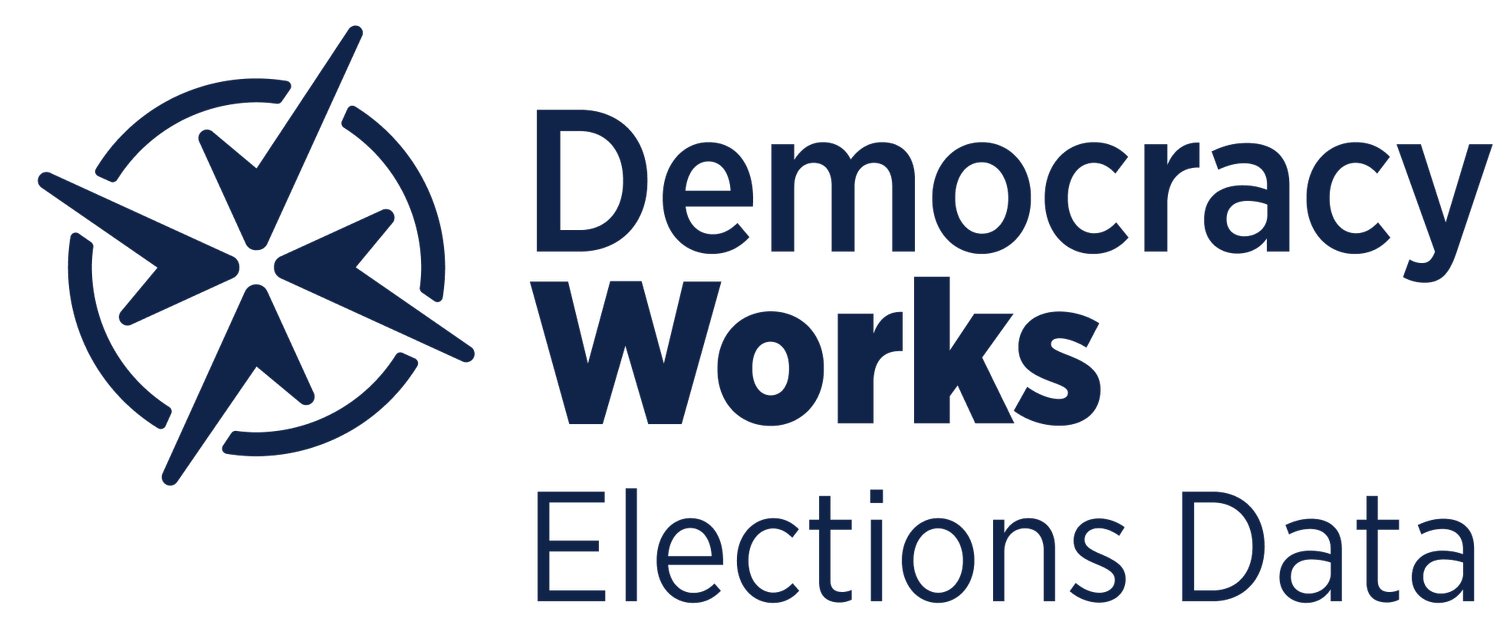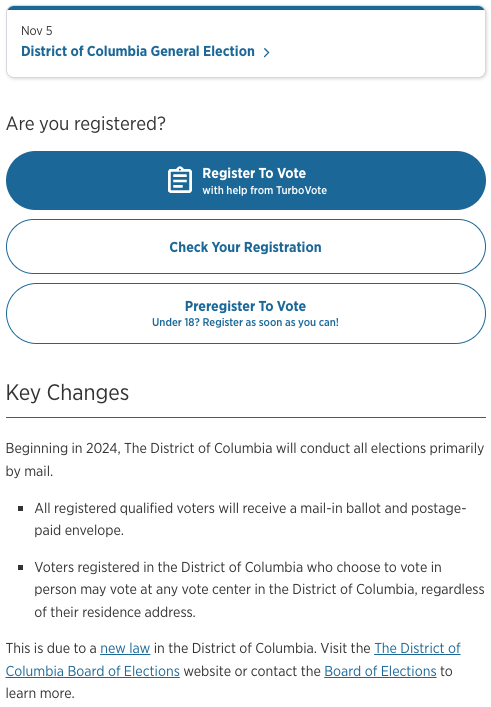Staying Current: How Democracy Works Keeps Up with Changing Election Legislation
Because election and voting laws are constantly evolving, Democracy Works has to keep up with thousands of ongoing legislation, litigation, and administrative changes every year to ensure our data is up-to-date. We inform voters of these important developments through the Key Changes sections of our state authority pages and election pages.
What’s in a Key Change?
The majority of our Key Changes reflect when a state changes its policy in a way that directly impacts voters. These changes may involve registration methods, voting methods, vote by mail procedures, early voting, and voter ID requirements. To avoid burdening voters with unnecessary details, we do not create Key Changes about small administrative adjustments that won’t impact their registration or voting experience.
Key Changes are included in TurboVote’s guide for the 2024 Washington, D.C. General Election.
Our Key Changes typically only apply to statewide elections. We may occasionally write Key Changes for local elections, but only if there are unusual circumstances that may cause significant confusion for voters.
Tracking legislation
Most of our Key Changes begin in state legislatures. At the beginning of the year, our Government Affairs team identifies the topics and issues Democracy Works plans to track in legislation. There may be thousands of relevant bills introduced in a given year, although only a small percentage will be enacted. In 2023 alone, 2,099 election bills were introduced in state legislatures. Approximately 12% (258) of these bills were enacted that year, although many were not effective immediately.
We use LegiScan, a nonpartisan platform that obtains its information from official government sources, to monitor the progress of voting legislation. As soon as a bill has passed one chamber of a state legislature, our Government Affairs team begins to track it closely. We also note the party composition of the second chamber, which may impact the bill’s progress. If a bill is introduced by a party that has control of both chambers and the executive branch, for instance, that bill is highly likely to pass.
Once a bill is passed and signed by a governor, it goes into our Key Changes pipeline. When determining our publishing schedule, we consider the dates when bills go into effect. If there is a significant gap between when a bill is signed and when it goes into effect, we prepare the Key Change for its effective date and closely monitor potential lawsuits challenging the new law.
Court rulings and state guidance
We may create a Key Change in response to a court ruling if it results in a change that impacts the voting experience. We closely monitor court cases in states with upcoming elections so we can respond to changes as quickly as possible.
For example, shortly before the General Election in 2022, the Delaware Supreme Court ordered the reversal of a previously enacted Delaware law allowing no-excuse absentee voting and election day voter registration. As a result, we updated Key Changes to ensure that Delaware voters knew they would need an excuse to vote by mail, and they would need to register to vote by an earlier deadline.
We also write Key Changes in response to state guidance, which includes orders from a state’s chief election office or governor’s office. For instance, a governor may sign an executive order expanding voting options for voters in counties impacted by a natural disaster. These types of changes are often time-limited to a specific election and may appear in our election pages rather than our evergreen state authority pages.
Writing, quality assurance, and publishing
When writing Key Changes, we distill the relevant legislation, court ruling, or state guidance into a short paragraph that highlights how the changes will impact the voting experience. We provide links to the authoritative source, which is usually a bill or law with a government domain, so voters can inspect the source of the data themselves. We also provide links to the contact information for voters’ election offices if they have questions about the change.
Once the Government Affairs team writes the Key Change, it goes through two rounds of quality assurance by our Research team as well as a round of edits from our technical writer and a Spanish translation from our senior research and translation associate. When possible, the Key Change is checked by a researcher who has recently collected data from the state impacted by the new rule.
Once the quality assurance process is complete, the Key Change is published to the relevant state authority or election page. We typically keep a state authority Key Change in place for a two-year federal election cycle and evaluate state authorities every year to determine whether this guidance needs to be updated or can be removed.
Key Changes are critical to ensuring our elections data remains accurate and timely. Thanks to our dedicated, highly-trained team, we are able to help voters navigate a changing election landscape and provide them with the information they need to cast their ballots.
How can our trusted election information help your organization? Reach out today to learn more.

